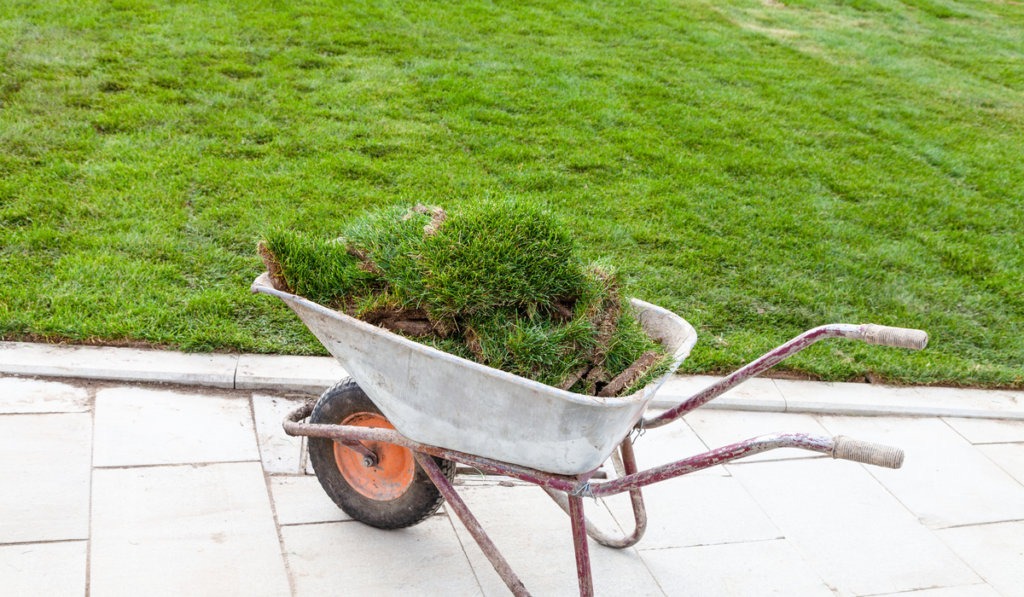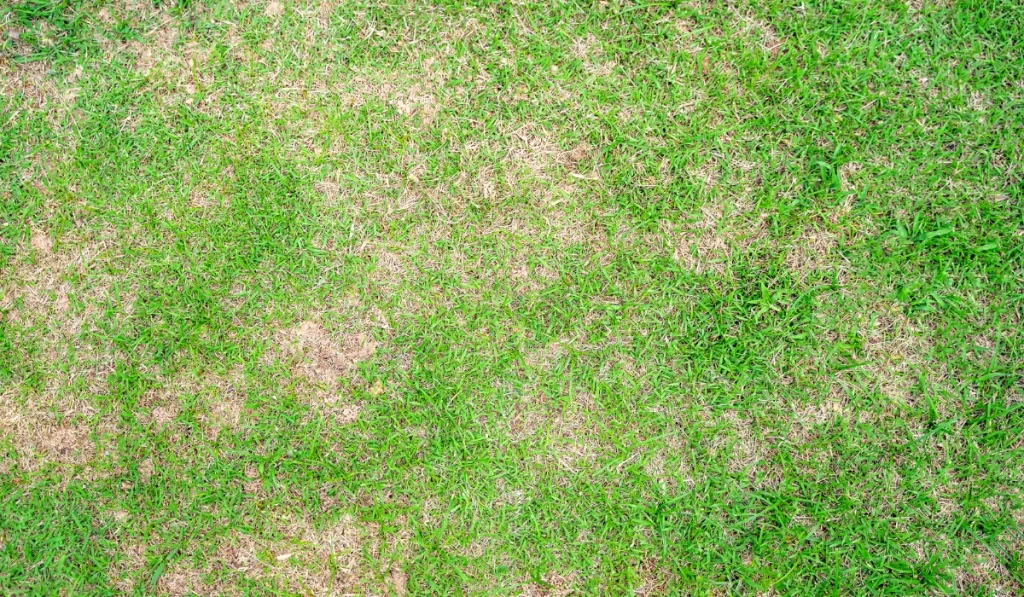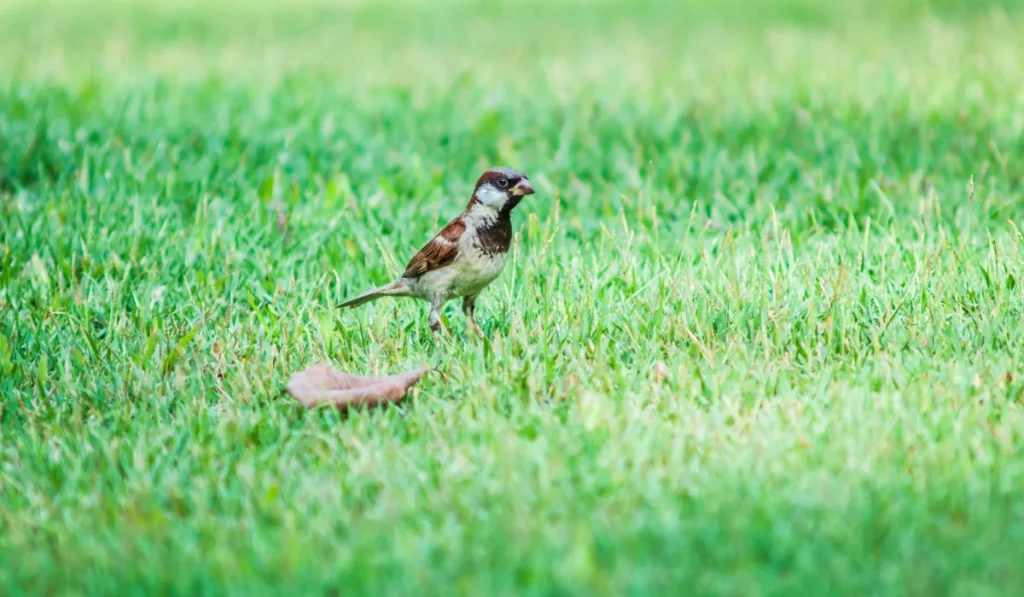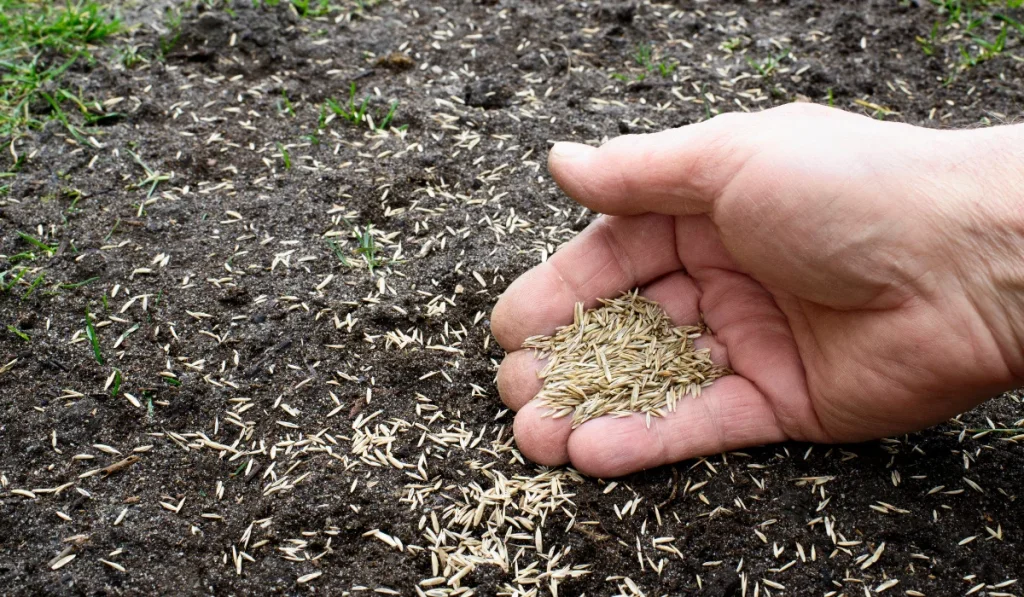If you’re in the market for a new lawn, you may have come across Kurapia grass. This low-maintenance grass is becoming increasingly popular due to its drought tolerance and lush, green appearance.
However, there are some things you should know about Kurapia before making the decision to plant it in your yard. In this blog post, we’ll cover the pros and cons of Kurapia grass as well as what you can expect in terms of maintenance.
Key Takeaways
- Kurapia grass is a tough, wear-resistant turfgrass that was first developed in Japan.
- It is tolerant of hot, dry weather as well as foot traffic.
- Kurapia grass requires little to stay healthy besides regular mowing and watering.
What Is Kurapia Grass?
Kurapia grass is a type of turfgrass that was originally developed in Japan, developed from a variety of Phyla that grows natively in Japan. Now, it is grown in the United States as well.
It is known for its dense, deep green blades, and it has quickly become a popular choice for lawns and golf courses around the world.
Kurapia grass is incredibly resilient, and it is able to withstand heavy traffic and harsh weather conditions. In addition, it has very low-maintenance requirements, making it an ideal choice for busy homeowners.
Whether you are looking for a low-maintenance lawn solution or you simply want to add some color to your garden, Kurapia grass is a great option to consider.
Color
Kurapia grass is a type of color grass that is commonly used in landscaping because the blades of kurapia grass are a deep green color, and the tips of the blades are slightly lighter in color, offering a distinct lushness.
Drought Tolerance
Kurapia grass is known for its ability to withstand long periods of drought and heat, making it an ideal choice for landscaping in arid climates. In addition to its drought tolerance, Kurapia grass is also uniquely fire-resistant.
Disease Tolerance
Kurapia grass is known for its disease tolerance. It is resistant to many common diseases that affect other turfgrasses, such as brown patch and dollar spot. It also has a deep root system that helps it withstand droughts and heat stress.
Shade Tolerance
Kurapia grass is a versatile and low-maintenance turfgrass that is well-suited to a variety of environments. Kurapia is tolerant of both full sun and partial shade, making it an ideal choice for shady areas that are often difficult to grow grass. While it can tolerate partial shade, it does prefer to be grown in full sun and will thrive with lots of light.
Heat Tolerance
Kurapia grass is a popular choice for landscaping in warm climates because it is very tolerant of heat (it can easily handle temperatures as high as 120 degrees Fahrenheit) and responds well to minimal irrigation. It grows quickly and forms a dense mat that helps suppress weeds. Kurapia grass is also drought-tolerant and able to withstand long periods of dry weather. In fact, kurapia grass thrives in full sun and can even tolerate reflected heat from pavement or buildings.
Winter Color
As the weather gets colder, many plants start to lose their color, leaving gardens looking drab and dull. However, there are a few select plants that actually become more vibrant in the winter months. One of these is kurapia grass. Kurapia is known for its striking green color. In the winter months, that color does not fade—it is one of the few grass types that lacks a dormant period and will stay vibrant all year long.
Recovery from Moderate Wear
Kurapia grass is a versatile and robust variety of turfgrass that is known for its ability to recover quickly from moderate wear and tear. Whether you’re dealing with foot traffic, pets, or even heavy machinery, kurapia grass is designed to withstand a fair amount of damage without losing its luscious green color or vigor. This makes it an ideal choice for busy families or businesses who don’t have the time or resources to constantly monitor and care for their lawn.
Pros of Choosing Kurapia Grass
There are several reasons why Kurapia grass has become so popular in recent years. First and foremost, it’s an incredibly low-maintenance grass.
Once it’s established, it requires very little water, fertilizer, or mowing. It also has a very dense growth habit, which means it crowds out weeds and doesn’t require herbicides.
Additionally, Kurapia grass is very tolerant of wear and tear, which makes it ideal for high-traffic areas. And last but not least, it’s one of the most beautiful turfgrasses on the market today—it has a deep green color and a soft texture that feels great on bare feet.
Cons of Choosing Kurapia Grass
One of the biggest downsides to Kurapia is its cost. It’s one of the more expensive turfgrasses on the market, so if you’re working with a tight budget, it may not be the right choice for you. Additionally, because it’s such a low-maintenance grass, it doesn’t stand up well to neglect.
So if you’re planning to plant Kurapia and then neglect your lawn, you’ll likely be disappointed with the results.
Maintenance Tips for Kurapia Grass
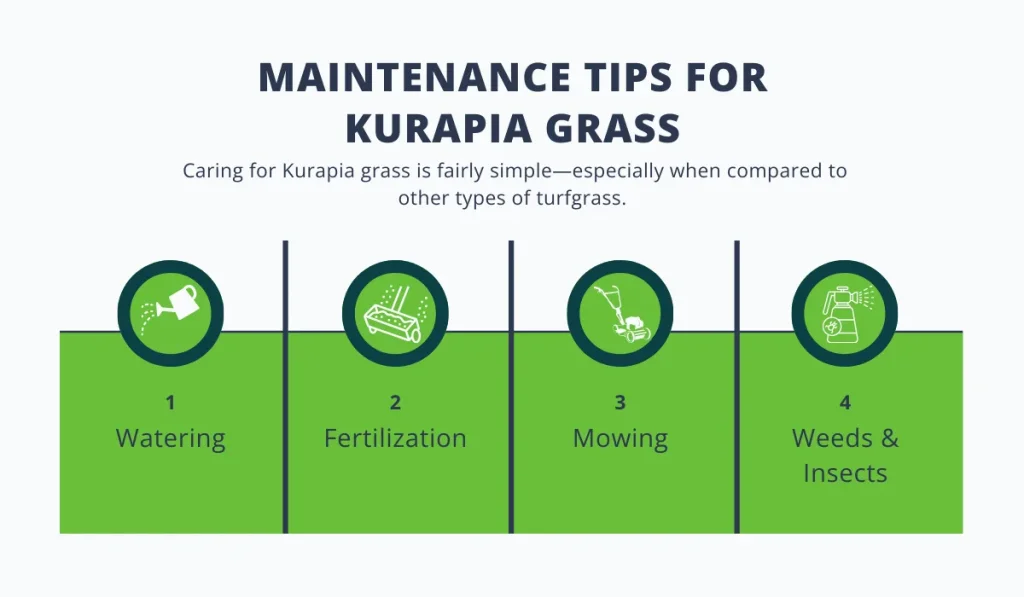
Fortunately, caring for Kurapia grass is fairly simple—especially when compared to other types of turfgrass.
Watering
The frequency of watering will depend on a number of factors, including the time of year, the amount of rainfall, and the level of sun and heat exposure. In general, kurapia grass should be watered once or twice a week during the summer months and every two to three weeks during the winter. Once your sod has established roots, you can water less often, too.
Fertilization
Kurapia grass does not require fertilization (it is tolerant of most soil types and even some salinity), but it may benefit from occasional applications of a nitrogen-rich fertilizer during the spring and summer months.
Mowing
When it comes to mowing, kurapia grass should be cut about once per week during the growing season. The blades should be cut to a height of about 2 to 3 inches.
Weeds & Insects
Kurapia grass is a highly versatile and resilient plant, but it is not resistant to all types of weeds and insects. In order to keep your kurapia lawn looking its best, it is important to take steps to prevent and control weeds and insects.
One of the best ways to prevent weeds from taking over your kurapia lawn is to maintain a healthy lawn. A dense, healthy kurapia lawn will crowd out weeds and make it difficult for them to take root. In addition, regular mowing will help to remove weed seeds before they have a chance to germinate. If you do notice weeds beginning to establish themselves in your kurapia lawn, you should pull them up as soon as possible. The longer you wait, the harder they will be to remove.
Kurapia grass is tolerant of most pre-emergent herbicides, so it’s a good idea to use these to prevent weeds before they become an issue.
Insects can also be a problem for kurapia lawns. Some insects, such as grubs, can damage the roots of the grass, while others, like chinch bugs, can suck the juices from the blades of grass. If you notice any damage or insect activity in your kurapia lawn, you should contact a pest control professional for advice on how to deal with the problem.
The Bottom Line
If you’re looking for a low-maintenance lawn option that will stay green and lush all year long without requiring copious amounts of water or fertilizer, then Kurapia grass may be right for you.
It requires less water than many other types of sod, plus it can tolerate both heavy and light foot traffic. It’s the perfect choice for any lawn but especially a lawn in drought-prone areas of the country (like California).
However, keep in mind that this turfgrass does come with a hefty price tag and requires at least some basic maintenance throughout the year.
People Are Also Asking:
What does Kurapia Grass cost per pallet?
On average, Kurapia costs around $130 to $400 per pallet, not including shipping.
How does Kurapia Grass compare to Tifway 419?
Like Tifway 419, Kurapia Grass has a dense growth habit and produces a thick carpet of blades. However, Kurapia Grass is more tolerant of wear and tear, making it a good choice for areas that receive heavy foot traffic. In addition, Kurapia Grass is less susceptible to disease and pests, meaning that it requires less maintenance than other types of turfgrass.
What are the best tools for caring for sod?
A sharp lawn mower blade is essential for preventing damage to the grass, and a garden hose with a sprinkler attachment will help you keep the sod hydrated. A thatching rake can also be helpful for removing dead grass and debris, and a leaf blower can make it easy to keep your lawn clean.
